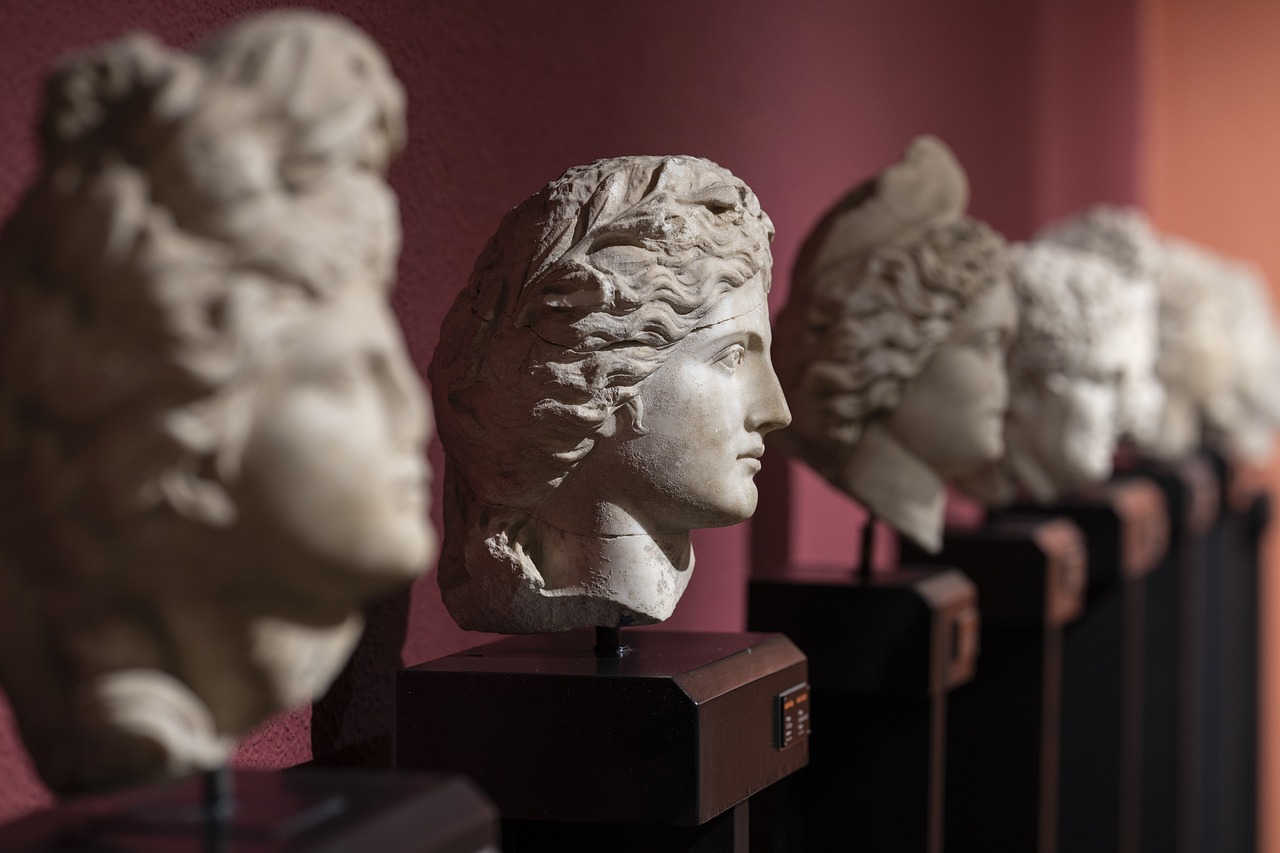Ares, known as the Greek god of war, is often regarded as one of the least favored Olympian deities due to his impulsive nature, fierce temperament, and constant craving for chaos. His romantic entanglement with Aphrodite, his clashes with Hercules, and the ire he drew from Poseidon after slaying the latter’s son, Halirrhothios, highlight his contentious relationships among both gods and mortals.
Family of Ares
Ares is the offspring of Zeus and Hera and has two sisters, Hebe and Eileithyia. Interestingly, the Greeks imagined Ares as originating from Thrace, possibly to connect him with peoples they viewed as ferocious and battle-hungry, distinct from themselves. He fathered children with various companions, many of whom met grim fates at the hands of Hercules during his famed twelve labors. For instance, his daughter Hippolyta, queen of the Amazons, lost her precious girdle to Hercules; Eurytion, another son, faced losses in his livestock, and Diomedes endured the theft of his prized horses. It was thought that the warlike Amazons descended from Ares himself.
In mythological narratives, Ares is revered for his physique and bravery, traits that certainly contributed to winning the affection of Aphrodite, despite her marriage to Hephaistos. Together, they had a daughter, Harmonia, and the god of desire, Eros. Hephaistos once captured the illicit couple in a clever trap, a story famously told in Book 8 of Homer’s “Odyssey.” As a consequence of his affair, Ares faced temporary exile from Mount Olympus.
The Dual Nature of Ares
Ares was portrayed by Hesiod in his “Theogony” as embodying the violent and ferocious aspects of war, primarily through titles such as ‘shield-piercing Ares’ and ‘city-sacking Ares.’ This distinct characterization set him against Athena, who epitomized a more calculated approach to warfare. In legendary tales, Ares frequently appears with his offspring Phobos (Fear) and Deimos (Terror), along with his sister Eris (Strife) and his charioteer Enyo.
The Conflict with Hercules
Among the many myths surrounding Ares, his confrontation with Hercules stands out. Ares’ son, Kyknos, earned a malevolent reputation for ambushing travelers journeying to the oracle at Delphi, prompting Apollo to send Hercules for resolution. Following Kyknos’ death at Hercules’ hands, Ares became enraged and battled the hero. However, with Athena’s protection, Hercules managed to injure Ares. Another story depicts Ares being captured by the twin giants Ephialtes and Otus, who besieged Mount Olympus. They imprisoned Ares in a bronze vessel for a year until Hermes intervened.
Role in the Trojan War
Within the framework of the Trojan War depicted in Homer’s “Iliad,” Ares lends his support to the Trojans and occasionally leads them alongside Hector in combat. Homer’s portrayal of Ares is not particularly flattering, casting him as an unpleasant figure within the Greek pantheon, frequently labeled with epithets like ‘hateful Ares’ and ‘curse of men.’ His frequent defeats, particularly against Athena and the Achaean hero Diomedes, reinforce his depiction as less competent than his divine counterparts. Olympian leaders regarded Ares with disdain, as seen when Zeus disregarded his grievances while instructing Paieon to heal Ares after a battle injury.
Ares and the Athenian Court
Ares further caused discord on Olympus when he faced accusations of murdering Poseidon’s son, Halirrhothios, by a stream near Athens. A special tribunal, the Areopagus, convened to adjudicate the matter and ultimately acquitted Ares when evidence surfaced that Halirrhothios had raped Ares’ daughter, Alcippe. Subsequently, this court became a notable venue in Athens for trials involving murder and other serious offenses.
Ares in Spartan Society
It is not surprising that Ares was venerated in Sparta, a city steeped in military tradition. His worship was not widespread; however, altars and temples dedicated to him appeared in locations across Greece, including Crete, Argos, and Erythrae, as well as among the Colchians located on the Black Sea.
Artistic Representation of Ares
In the Archaic and Classical periods of Greek art, Ares is typically portrayed in full battle gear, complete with a helmet, shield, and spear, often indistinguishable from a regular warrior. Occasionally, depictions depict him driving a chariot drawn by fearsome, fire-spewing horses. The myth of Ares’ feud with Hercules notably inspired many Attic vases in the 6th century BCE.
In subsequent eras, the Roman deity Mars inherited many of Ares’ attributes but lacked his more human characteristics. Mars also gained significance as the father of Romulus and Remus, the mythical founders of Rome, thereby elevating the city’s revered status. Like Athena’s role in Athens, Mars was a principal deity of Rome, and the month of March was named in his honor.



